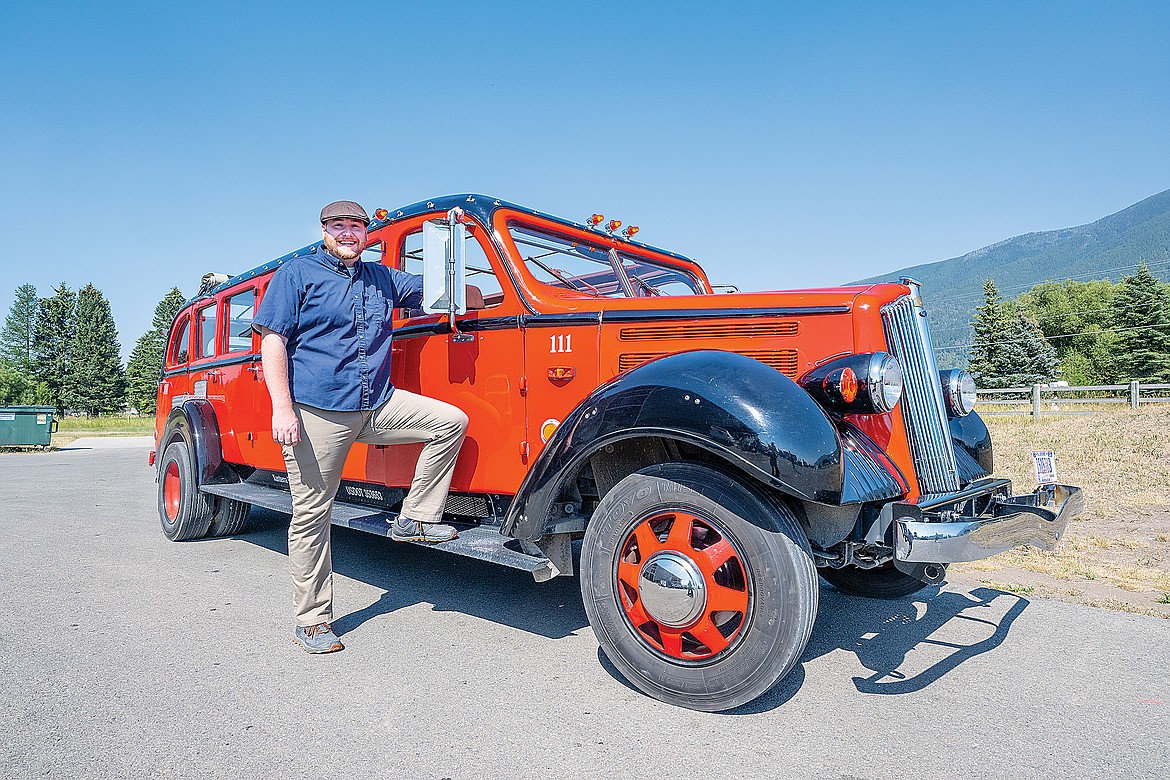Slowly, but surely, Glacier’s red bus fleet seeing a rebuild
By CHRIS PETERSON
Hungry Horse News
Glacier National Park’s iconic red buses are slowly, but surely, seeing another upgrade to their engines, chassis and bodies. The fleet was last overhauled in the early 2000s by the Ford Motor Co.
The fleet dates back to the 1930s and have gone through at least four renovations in the past, including a switch to automatic transmissions in 1989. The buses were originally built by the White Motor Co., and had manual transmissions, where shifting was an art form and gears were often ground (thus the name “gear jammers” for the drivers). Today the buses have Ford chassis and engines, but the shape and form remain true to the White original design.
While the buses are owned by the Park Service, concessionaire Xanterra Travel Collection, under its contract with the Park Service, has been funding the rebuilds, which cost about $250,000 to $300,000 per bus.
All changes, noted Xanterra Transportation Director Dave Eglsaer, are fully vetted by the Park Service.
There are 33 active buses in the fleet, and to date 16 have been renovated by Legacy Classic Trucks out of Driggs, Idaho.
But not all the rebuilds have the same specifications. The first five buses done in 2019, have 6.2 liter V8 Ford engines and they have new chassis.
Then in 2020-21 five more buses were rebuilt with new chassis, but bigger engines — a 7.3 liter V8 with a hybrid electric motor, designed to give the buses about 25% more fuel efficiency.
They also have a cosmetic replica dashboard with dials that show the speed. A more modern dashboard sits at the steering console, however.
This year five more buses have been rebuilt, but because of supply chain issues, the new chassis weren’t available, so the engines have been replaced with new 5.4 liter V8 engines and no hybrid system.
The previous rebuilds also had 19-inch wheels, which make the bus ride taller, but are also difficult to find and replace, Eglsaer noted.
So the company and the Park Service have decided to go back to a 16-inch tire with a higher profile, so they will ride, and look, about the same.
The buses have also been redesigned for comfort and safety. The door frames, for example, have steel supports and the cabs have new heaters and three speakers so folks can better hear the drivers on the bus tours.
The front seats are now captain chairs (they used to be bench seats) and the rear seat has about 6 inches more leg room, as the size of the blanket and driver boxes was shrunk a bit.
Xanterra and the Park Service are also considering building a bus that runs on alternative fuel.
Some of the original Ford 2002 rebuilds had propane engines, but they didn’t work as well as expected and were eventually replaced with gas engines.
The buses are beloved by passengers and drivers alike. The drivers are a blend of older veterans who have been driving buses for years, while the company also hires college-aged drivers, who typically drive buses the year that they graduate, since the job typically runs into the fall.
The company trains all its drivers individually and provides them with the training and commercial drivers license test.

